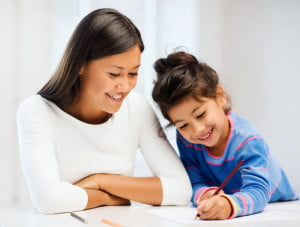Need some ideas to transition you and your family into the giving season? When thinking about giving, there is a tendency to think big picture, big donations, and the like. These big ideas can feel overwhelming to children. Instead think about small child-sized giving opportunities that are more tangible. Keeping with this spirit, ask your child to consider what happens when someone shares a small act of kindness with them.
Start with a conversation
- Reading books about giving and kindness helps lay the groundwork
- Each Kindness by Jacqueline Woodson is a lovely conversation starter to give children a chance to think about the little things they do that spread kindness in the world. This book is also a good invitation to consider how to work through uncomfortable thoughts that come up when we wish we had done something different.
- The Three Questions by John J Muth introduces readers to a boy asking questions about being a good person. This is a great story to help children discover how they already may be doing good even if it feels like they don’t know what it should look like.
- Last Stop On Market Street by Matt de La Pena gives a unique glimpse into city life as well as a way to talk about seeing the beauty around you and in everything. If you have kids who don’t ask lots of ‘why’ and ‘how come’ questions, this book is a great introduction to looking at the world with inquisitiveness and wonder. It’s also a great start to talk about looking for the simple joys and good surrounding you and how you want to respond.
- Play a word game. Ask your child to fill in the blanks: “When you are cold, I give you ______. When you are hungry, I give you _____. When you are sad, I give you _____”. Then reverse it and have your child ask you to fill in the blanks. Point out that they are responding to someone by giving of their time, their belongings, and of themselves when they do these things. Take it a step further and ask how they respond to their friends and how their friends respond to them in different scenarios. This simple and easy fill in the blank game is a great way to support children in learning about themselves as a ‘giver’. Use this as a jumping off spot for engaging your child in a conversation about who in their community is in need, what they are in need of, and how you and your child can help.
- What are the Stars doing? There are a lot of music and movie stars who have a generous giving lifestyle. Have your child choose someone famous and search the internet with them to see all the ways they give to their community and help the world. Take it further by asking your child if they would like to donate something or to raise money for that person’s charity. Ellen DeGeneres, Taylor Swift, George Clooney, Leonardo DiCaprio, Angelina Jolie, Jackie Chan are some big names who give big.
Trying it out
- Make a Random Acts of Kindness “Cootie Catcher”! Check this one out from Bren Did: https://brendid.com/random-acts-of-kindness-for-kids-christmas-cootie-catcher/
- Look it up! What interests does your child have? Are they passionate about trees or the ocean? Maybe they feel moved to help people who don’t have as much or who’s life has been affected by natural disaster. Look online for charitable organizations and talk about how she can save money to give to her chosen organization. Setting an easy goal of $10 or so is a great way to keep her interest. Better yet, ask her if she wants to get other people involved in helping her give. If it helps, consider furthering the conversation by making a 3 sided piggy bank.
- 3 sided piggy banks are fun and easy to make by upcycling what you may already have around the house. Choose three same or similar sized containers with lids. Label the containers “Give” “Save” “Spend”. Decorate the containers and start putting money in them. Writing down a goal for each container will help facilitate an ongoing conversation with your child about his intention for each container. Here’s a neat idea using a shoebox and some little jars: https://www.icanteachmychild.com/make-it-save-spend-give-bank/
- Practice with stuffies! Did your child come up with a great idea of how to give to someone but is afraid to follow through? Try acting it out with your child’s stuffed animals. Sometimes practicing what you want to say or how you want to interact with someone gives an added boost of self-confidence. And for those visual learners, this gives them an idea of what it may look like.
Providing your child new and ongoing giving experiences offers a great connection to their community and grows important empathy muscles. The flip side of teaching your child about giving is having the chance to connect with your own spirit of giving and thankfulness. Enjoy!



